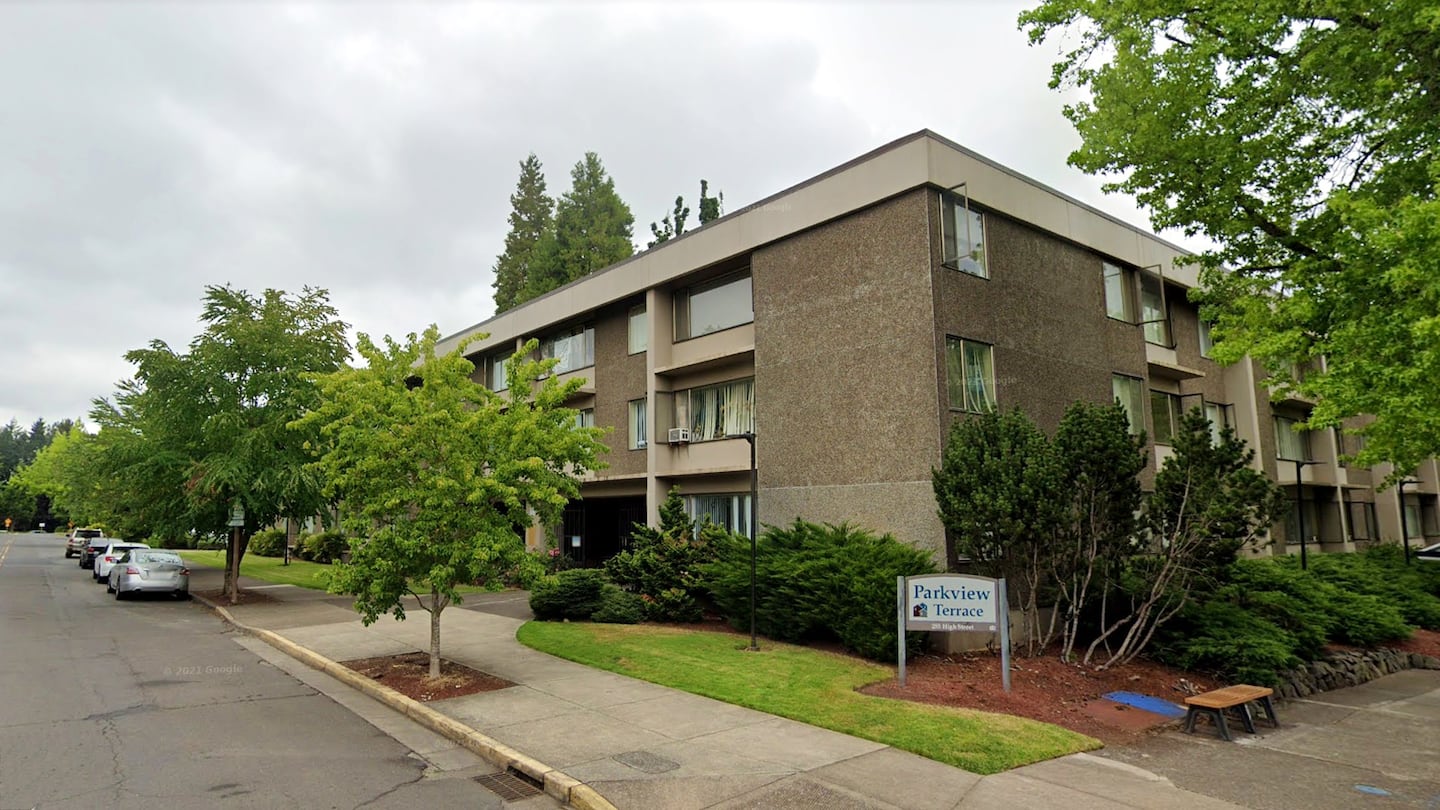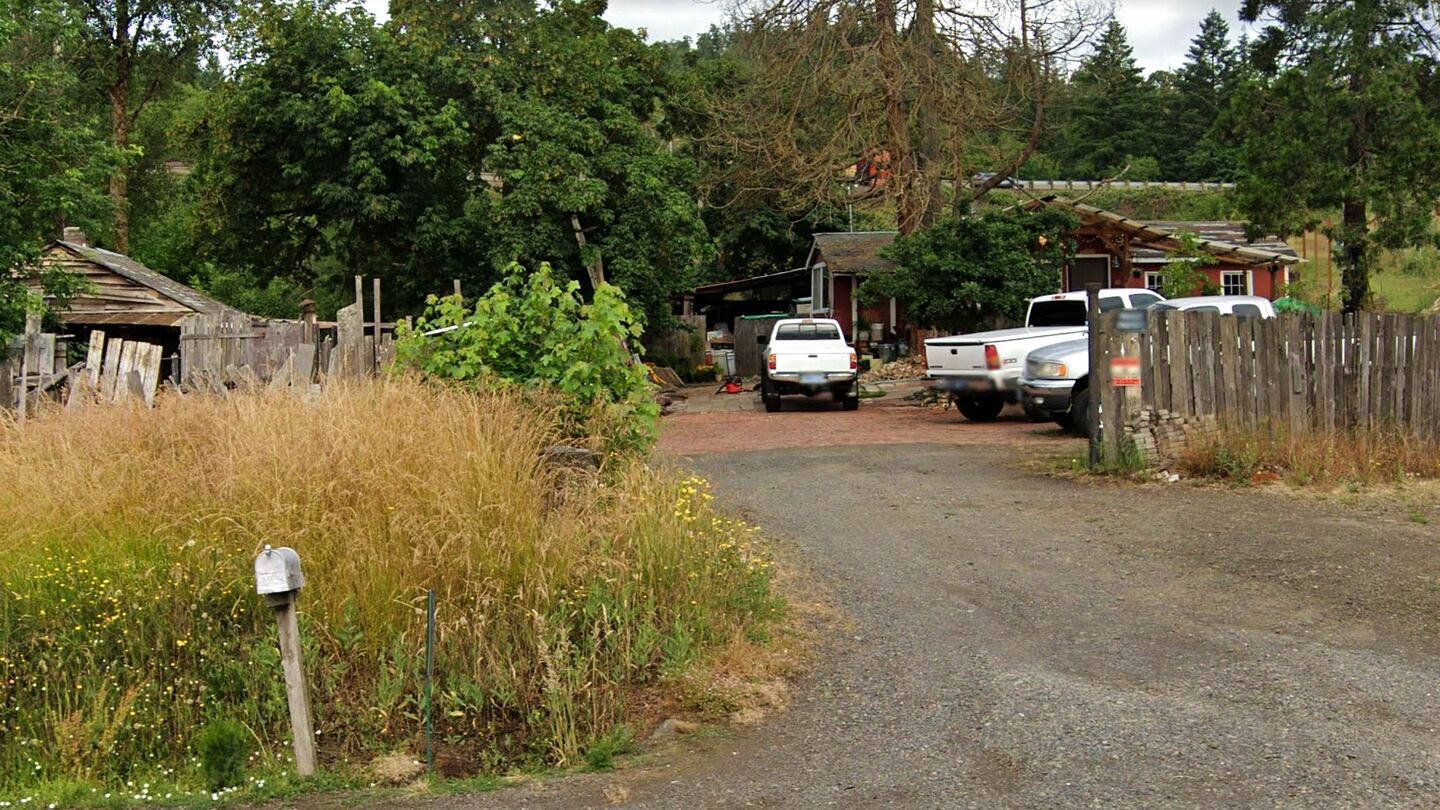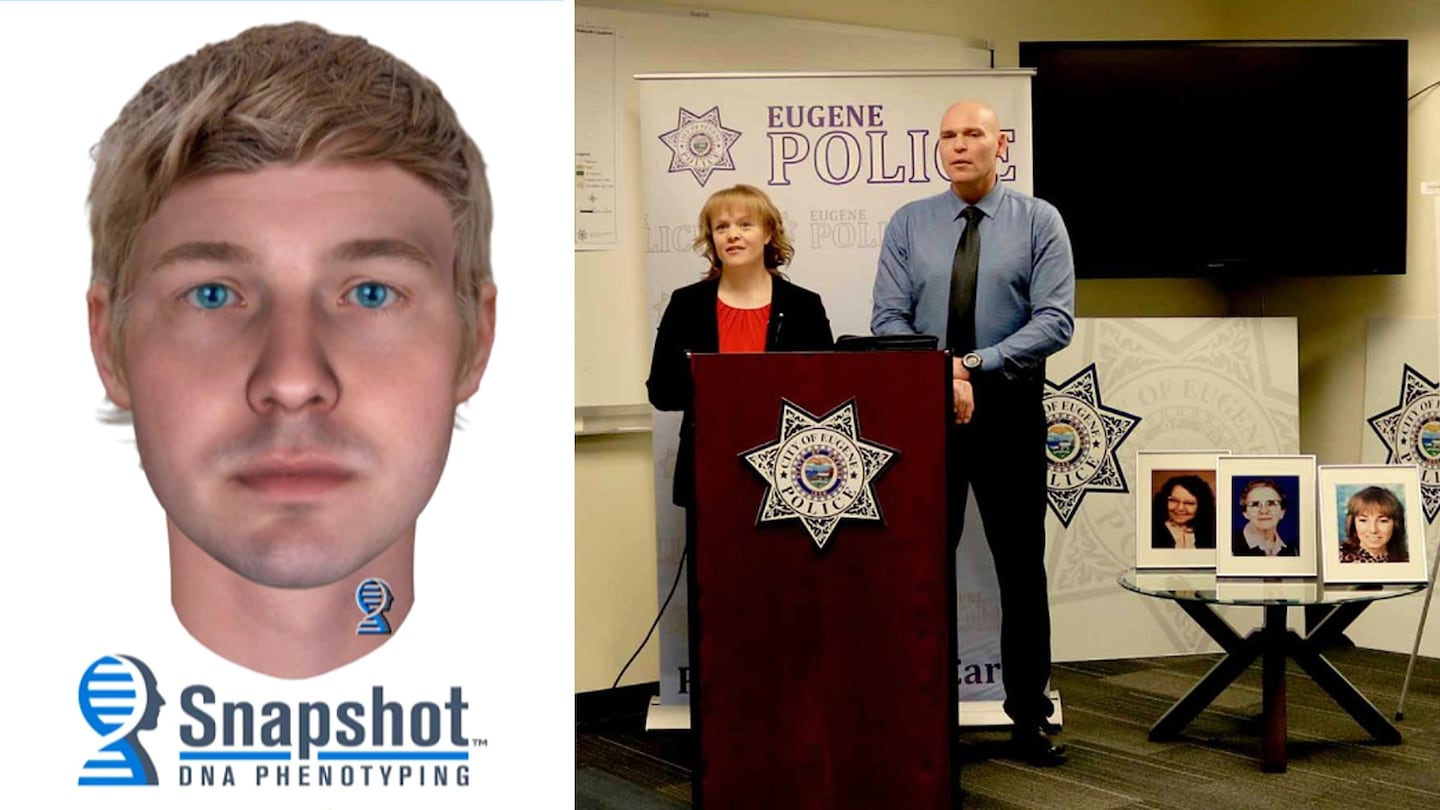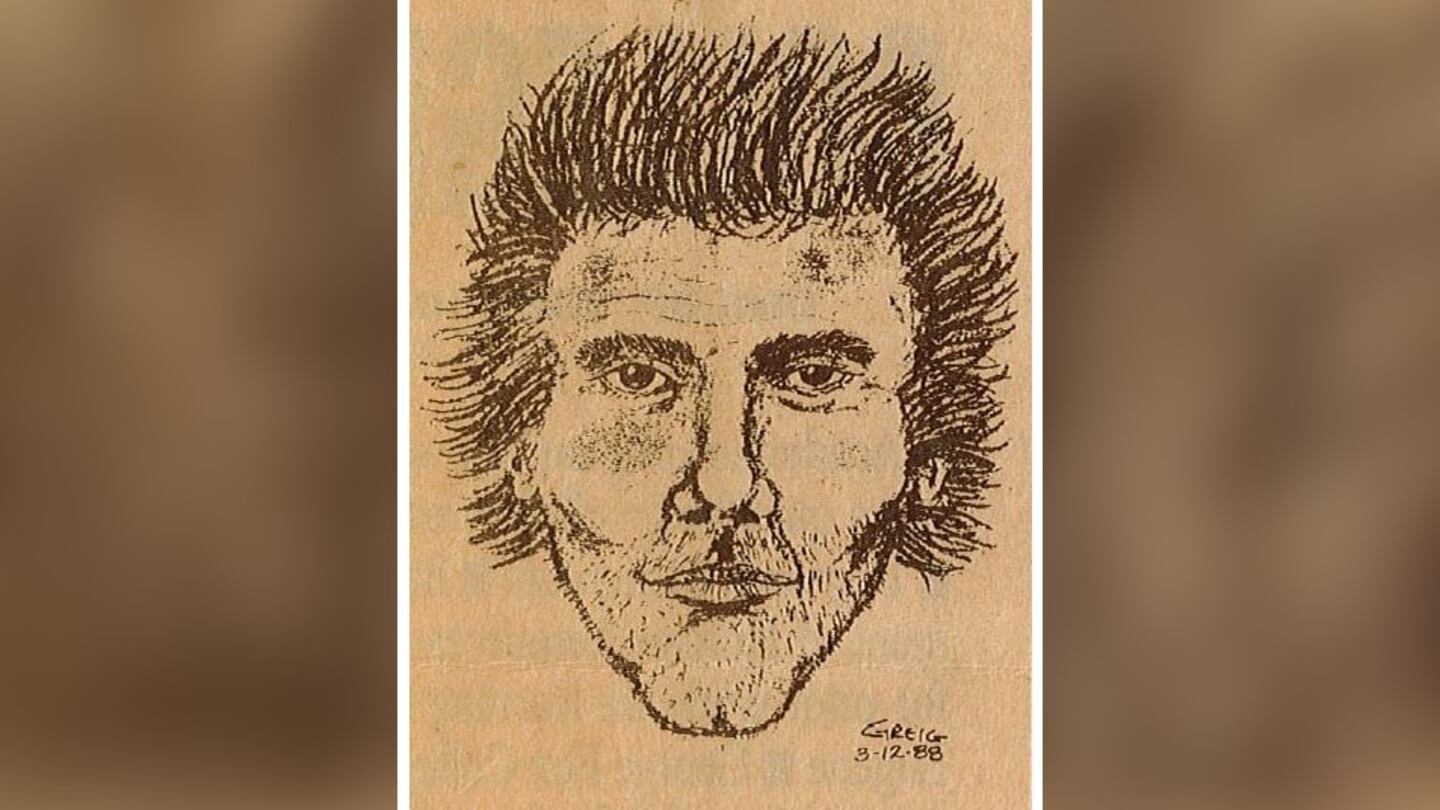EUGENE, Ore. — A convicted murderer who died by suicide in 1988 has been identified through genetic genealogy as an Oregon serial killer who killed at least three women in the two years before his death.
Eugene police officials said last month that DNA left at the crime scenes has been matched to the genetic profile of John Charles Bolsinger, who took his own life in March 1988, less than a month after what is believed to be his final murder.
Bolsinger, who was 30 when he died, is suspected of killing Gladys May Hensley, 62, Janice Marie Dickinson, 33, and Geraldine Spencer Toohey, 73, according to police officials.
All three women were subjected to “very violent strangulation, sharp force injuries and sexual assault,” Eugene police Det. Jennifer Curry told reporters in 2018.
Bolsinger was identified through collaboration with Parabon Nanolabs, a Virginia-based forensic genealogy service that works with law enforcement agencies across the country to solve cold cases.
Genetic genealogy is a process through which genealogists upload an unidentified person’s genetic profile into public DNA databases and use the data to reverse engineer the person’s family tree. Investigators are then able to use other public records to narrow down a pool of suspects, or the potential identities of an unidentified crime victim.
The investigative method exploded in popularity after California authorities used it in 2018 to identify the notorious Golden State Killer.
In the Eugene case, genealogists were able to narrow cold case detectives’ suspect pool down to four men before narrowing their focus to Bolsinger.
Lives cut short in the night
Bolsinger had a history of violence long before he encountered his alleged victims in Eugene. According to authorities, he was arrested for murder in Salt Lake City in 1980.
He was convicted and served five years in prison before being paroled on March 7, 1986, to Springfield, Oregon.
The terror in Eugene began three months later, on June 5.
Gladys Hensley was a resident at Parkview Terrace, a senior citizens’ apartment complex, so homicide wasn’t first on their minds when the complex manager and one of Hensley’s friends went to her unit to check on her. The Eugene Register-Guard reported in 1986 that Hensley’s friend had grown concerned because she had not been seen in a few days.
When they entered her ground floor apartment, however, they found her dead amid a violent scene. According to police, her killer had gained entry by cutting the screen of an unlocked window and climbing inside.
Another apartment in the complex had been burglarized in the same manner just days before, the Register-Guard reported. Jewelry and personal belongings were stolen and a bed was set on fire, but the tenant was not home in that incident.
Hensley, a retired cleaning crew worker at a local hospital, had lived in the building since 1970. A friend and fellow tenant told reporters she enjoyed the organ and accordion, as well as pastel painting.
Police officials said Hensley likely died in the early morning hours of June 4, 1986.
The killer struck again just two weeks later. The body of Janice Dickinson was found June 19, 1986, in a grassy area behind a car dealership.
According to the Register-Guard, a mechanic from the business found Dickinson lying face-up under a cottonwood tree about 20 feet from the dealership’s parking lot.
“I just happened to see her up there,” mechanic John Nelson told the newspaper. “There was a boot that caught my attention.”
Detectives deduced that Dickinson was slain on the embankment, which was just 10 blocks from the apartment where Hensley was killed. The younger woman was naked, and she had been sexually assaulted.
“We found her where she died,” Eugene police Detective Sgt. Mike Cline said. “There appears to have been some kind of struggle taking place there. How much of a struggle, I don’t know.”
The paper reported at the time that there was a substantial amount of blood on Dickinson and embankment, which sloped steeply down from Interstate 105.
Detectives told the reporter, who had also covered Hensley’s murder, that both women were killed in a similar fashion.
Both cases grew cold and the unknown killer seemed to go quiet. That changed 20 months later and about 5 miles away.
When her sister arrived to take Geraldine Toohey to church the morning of Feb. 28, 1988, peered into a window after a knock on the door went unanswered. The elderly woman’s body could be seen lying on the floor inside.
According to the Register-Guard, medics from the Goshen Fire Department called in the Oregon State Police after finding her death suspicious. Toohey’s back door had been broken down, and she had been sexually assaulted before she was slain.
Toohey had been on the phone with her sister the night before when the line went dead. After her body was found the next day, detectives noted that the phone lines had been cut, the newspaper reported.
Like the two cases before it, the Toohey homicide investigation ultimately went cold. DNA testing done in 2000 confirmed, however, that all three women had been killed by the same man.
New technology and a renewed interest
The case gained steam in 2016, when cold case detectives teamed up with Parabon, which had begun to market its Snapshot Phenotyping. Snapshot uses a person’s DNA to predict their ancestry and physical appearance.
The image was released by police in 2018 in the hope it would generate leads.
“The Eugene Police Department’s Violent Crimes Unit established a dedicated tip line for the cases,” police officials said in a news release. “More than 100 tips were received and followed up on by VCU detectives, but all of the names provided were eliminated as suspects.”
Months later, Parabon began offering its genetic genealogy services. Once the service pinpointed Bolsinger as the likely killer and authorities were able to confirm the DNA match, they were able to fill in some of the blanks in the serial killer investigation.
That included the unexplained lull between the murders of Dickinson in June 1986 and Toohey in February 1988.
According to a timeline compiled by detectives, Bolsinger was arrested for burglary in September 1986, three months after Dickinson’s body was found. The burglary investigation began Sept. 26, when officers arrived at a home on South 51st Place in Springfield to the sound of a woman screaming.
It ended with Bolsinger being convicted and sentenced to five years in an Oregon prison. After serving part of that sentence, as well as four months in Utah for a parole violation, he was released Dec. 8, 1987.
“On Dec. 11, 1987, (Bolsinger) enrolled at Lane Community College for the 1988 winter term,” authorities said. “On Feb. 28, 1988, Geraldine Toohey was discovered murdered in her residence on Franklin Boulevard.”
The details the burglary victim told officers were chilling, giving police insight into a crime signature no other known victim has survived.
“The female victim told officers she was at home and having trouble sleeping. She heard her dog making strange noises in the kitchen, so she went to investigate,” the news release stated. “All of the interior lights were off.”
By the light outside her rear sliding door, the woman saw a man peering into her kitchen window. A moment later, he opened the window and reached in, removing the brace on the sliding door.
“(The victim) ran back to the living room and called 911. While on the phone, she saw the suspect walk into the living room,” according to the release. “He stood still for a moment and then approached her.”
The woman told police she started screaming as the intruder tried to pry the phone from her hand. She began hitting him with the receiver and a flashlight, at which point he left through the kitchen window.
Bolsinger was captured a short time later by a Springfield police dog and its handler. When questioned, he first said he had knocked on the woman’s door and left when he got no answer.
He then claimed memory loss when questioned further.
>> Read more true crime stories
After serving time for the burglary and his parole violation in the Utah murder, Bolsinger allegedly picked up where he’d left off by killing Toohey.
There was a new wrinkle, however: Police had a witness who was able to help a police artist create a crude sketch of Toohey’s suspected killer. It apparently unnerved the serial killer.
“On March 5, 1988, the Oregon State Police released a sketch of the suspect in hopes of generating leads,” Eugene police officials said. “On March 23, 1988, John Bolsinger was discovered deceased at his apartment, which was located in the 100 block of Mill Street in Springfield.”
Detectives continue to look into Bolsinger’s past to determine if he had any other alleged victims. Anyone with information about Bolsinger or the murders is asked to contact Curry at 541-682-5166 or jcurry@eugene-or.gov.
©2022 Cox Media Group














